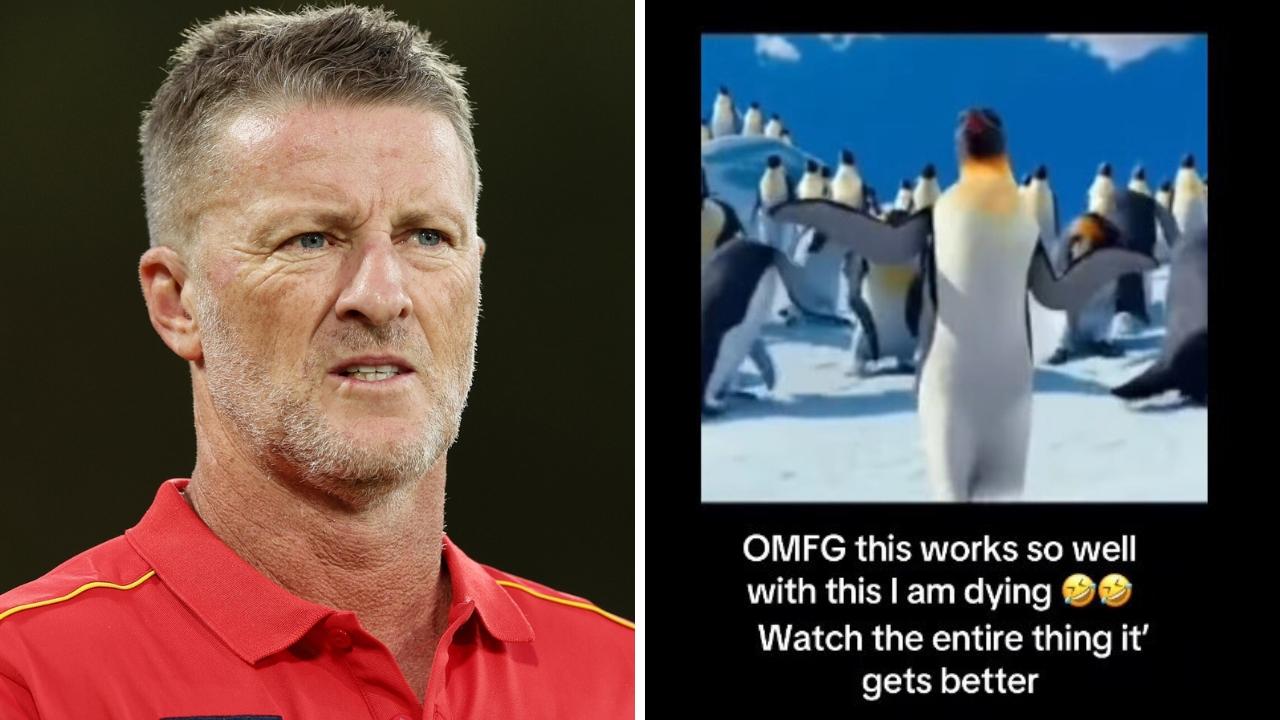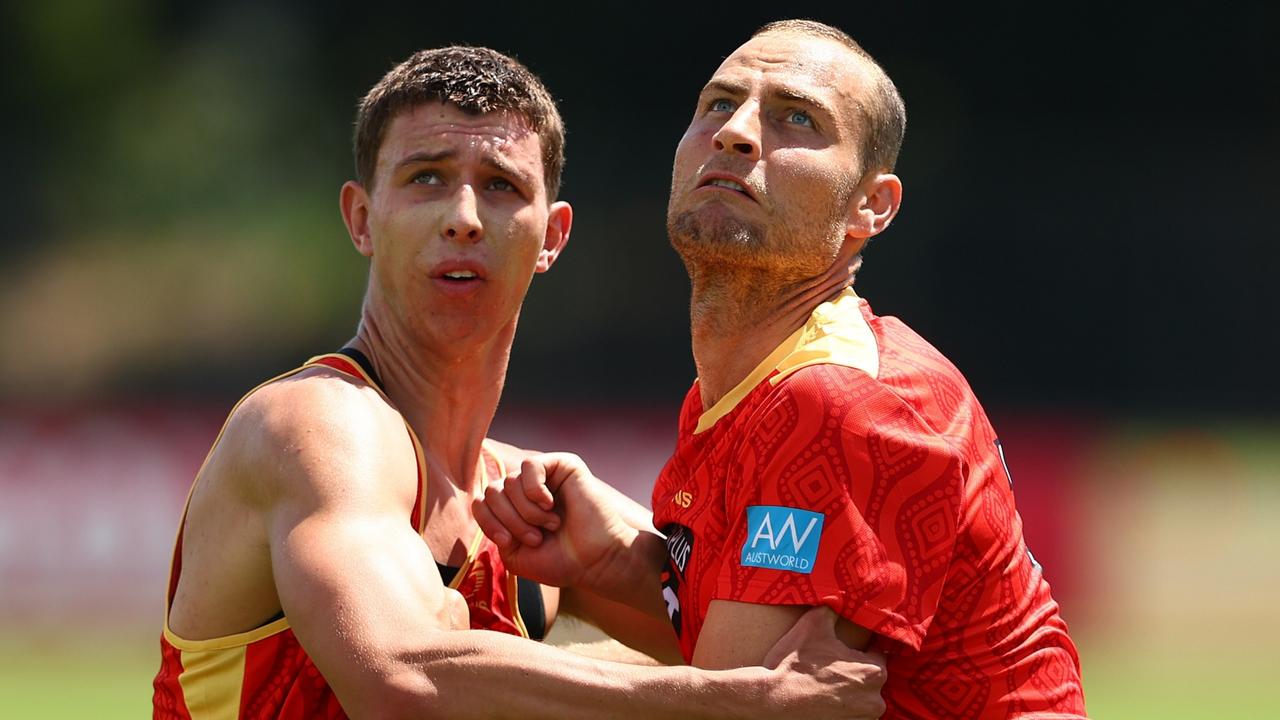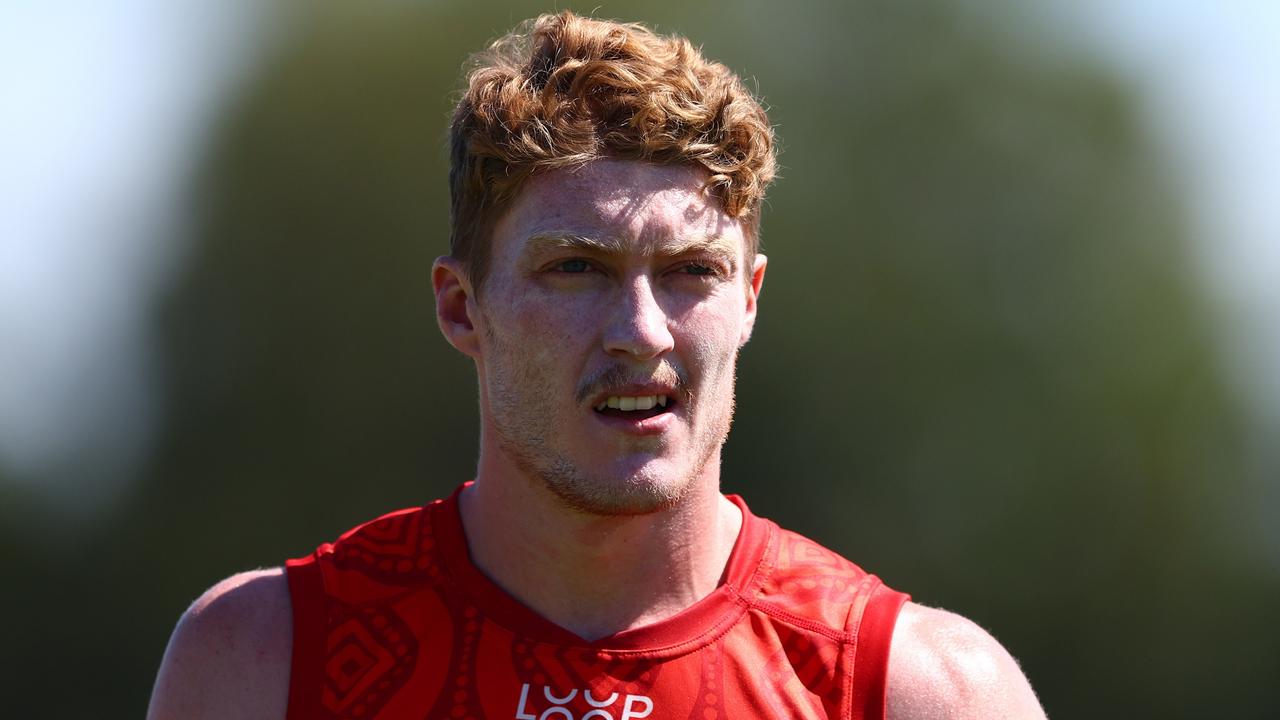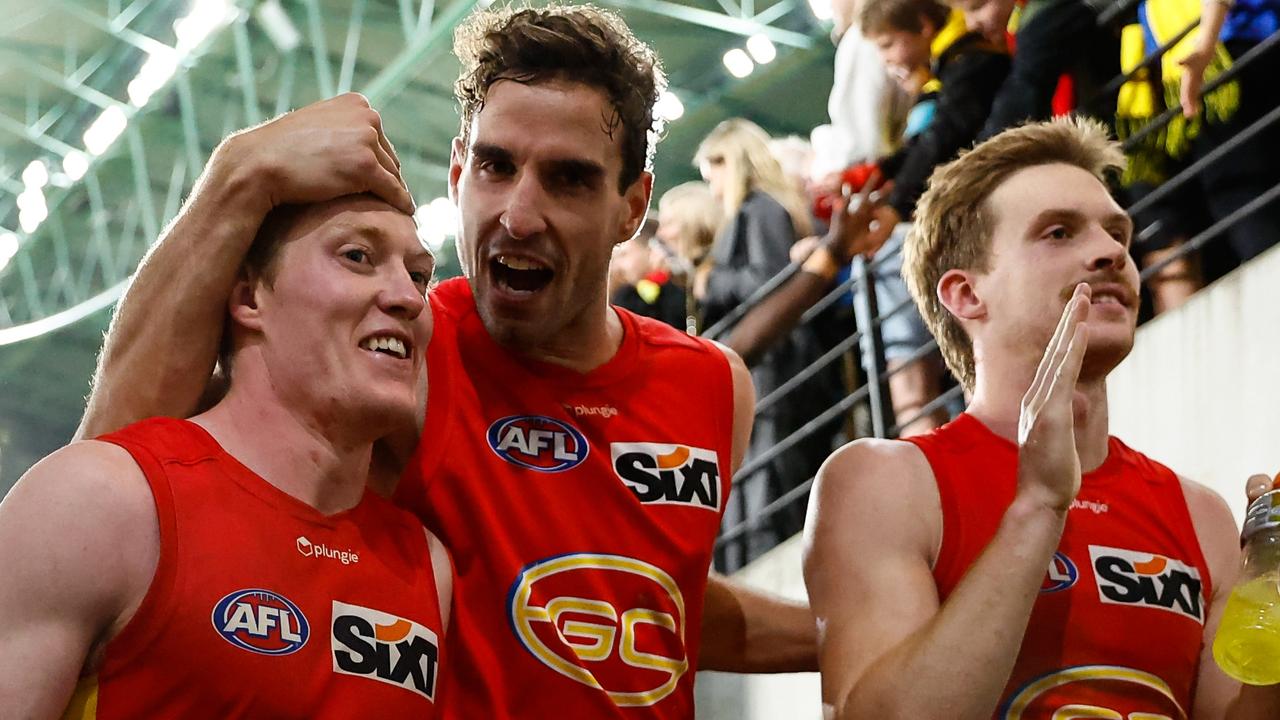Gold Coast AFLW: Katie Lynch reveals incredible story behind achilles rehabilitation
Gold Coast AFLW recruit Katie Lynch explains how countless hours of walking up and down steps to the beat of a metronome helped teach her brain and body to walk again as she battled a chronic Achilles injury.
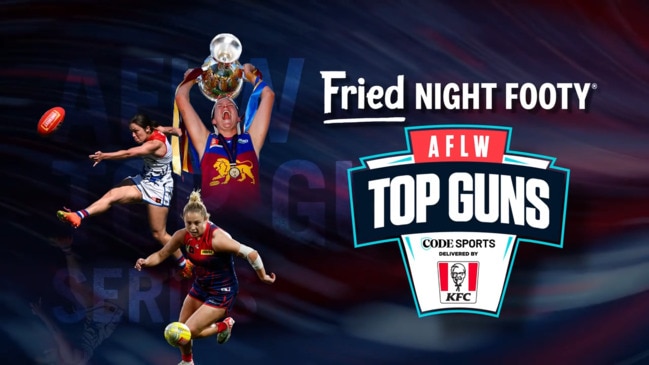
Gold Coast
Don't miss out on the headlines from Gold Coast. Followed categories will be added to My News.
For five years Katie Lynch was waging a war with her body she barely knew anything about.
Winning that war required teaching herself to walk again.
After months of “religious” rehabilitation that included the use of a metronome to rewire her brain, Lynch will run out for Gold Coast’s AFLW season opener against St Kilda on Saturday “pain free” for the first time in more than two years.
A chronic Achilles tendon injury brought on by overtraining when she was 18 threatened to completely derail the Season 7 All-Australian’s career just as it was starting to flourish.
For the majority of her 42 starts at Collingwood and the Western Bulldogs, Lynch fought through varying levels of pain and impingement.
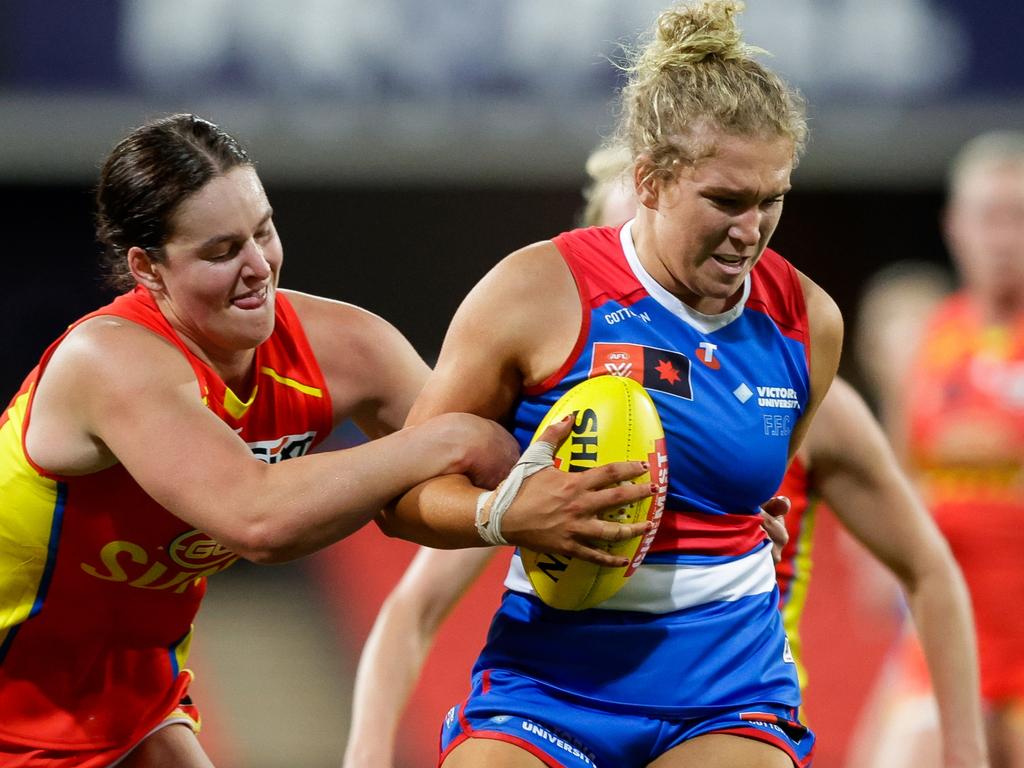
Some days she could play at her All-Australian best while others, simply walking was a challenge.
“Once you have damage pathology of your tendon, you don’t actually have to have symptoms to have a damaged tendon. So symptoms can come and go, but the tendon remains damaged,” Lynch explained.
“Once it was provoked it was going to be really hard to get it back (to normal) because I needed to play, and so that’s where I would just play through it.”
Things came to a head midway through last season when Lynch, then at the Bulldogs, realised she could no longer continue playing through the pain.
Aussie rules athletes are no strangers to injury. But so complex was Lynch’s Achilles issue, she consulted with one of the world leaders in tendon research, Latrobe University’s Dr Ebonie Rio, to get to the bottom of the problem.
Bohanna boots Gold Coast ahead before half-time ☀ï¸#AFLW | #AFLWTigersSunspic.twitter.com/05hvDkDq6R
— AFL Women's (@aflwomens) October 1, 2022
Dr Rio, who has helped a number of AFL and AFLW athletes and also works with the Victorian Institute of Sport and Australian Ballet, explained the metronome was a valuable external tool that helped break through barriers associated with some tendon injuries.
“When you have pain including tendinopathy you have changes to the way your brain controls your movement,” she said.
“You can think of it like the brake and accelerator of a car. The accelerator is your excitability and the brake is your inhibition. Essentially everything we do is a balance between your brake and accelerator.
“Different injuries can change the way the brain drives movement.
“What (a metronome) does is it helps rewire and change that brake and accelerator by activating lots of different connections in your brain with that external pacing and controlled movement. It makes your brain approach an exercise as a new skill or new way of learning.”

Because Lynch’s injury and response was load-related, it required her to be supremely specific when it came to rehabilitation. If the load was too little she could not strengthen the Achilles, but if it was too great then it would be further aggravated.
“The messaging to me was: ‘It’s going to take a long time, and it’s going to need you to be religious with your rehab, absolutely no shortcuts’,” Lynch said.
“I had to basically learn to walk and run again – my brain did and my body did.
“That had me doing some really strange exercises … stuff like stair walking and listening to a metronome beat, which basically trained my brain to walk and run again.
“It was all about getting strength through my calf and my feet and letting my brain know that this is how you walk to a beat, and you need to engage your calf muscle.”
Since she last took to an AFLW field in round 6 last year, Lynch has spent hours of her life walking up and down a flight of stairs on tiptoe with nothing more than the rhythmical beat of a metronome in her ear and a fierce determination to return to the field.
“I’m pretty much normal at the minute – with the understanding it’s a chronic injury and it might be provoked here and there, but I’ve got it to a really good spot at the moment where I’m feeling really healthy,” she said.
In the midst of her rehabilitation, Lynch was traded to the Suns as part of an 11-team mega trade last December that also brought fellow key defender Charlotte Wilson to the club, via Melbourne.
The Suns had noticed that every AFLW premier ranked among the top four teams for points against and prioritised shoring up their backline.
Landing both Lynch and Wilson was a major coup for the club but while the ex-Demon was able to hit the ground running, Lynch arrived knowing she still had a mountain – of stairs – to climb.
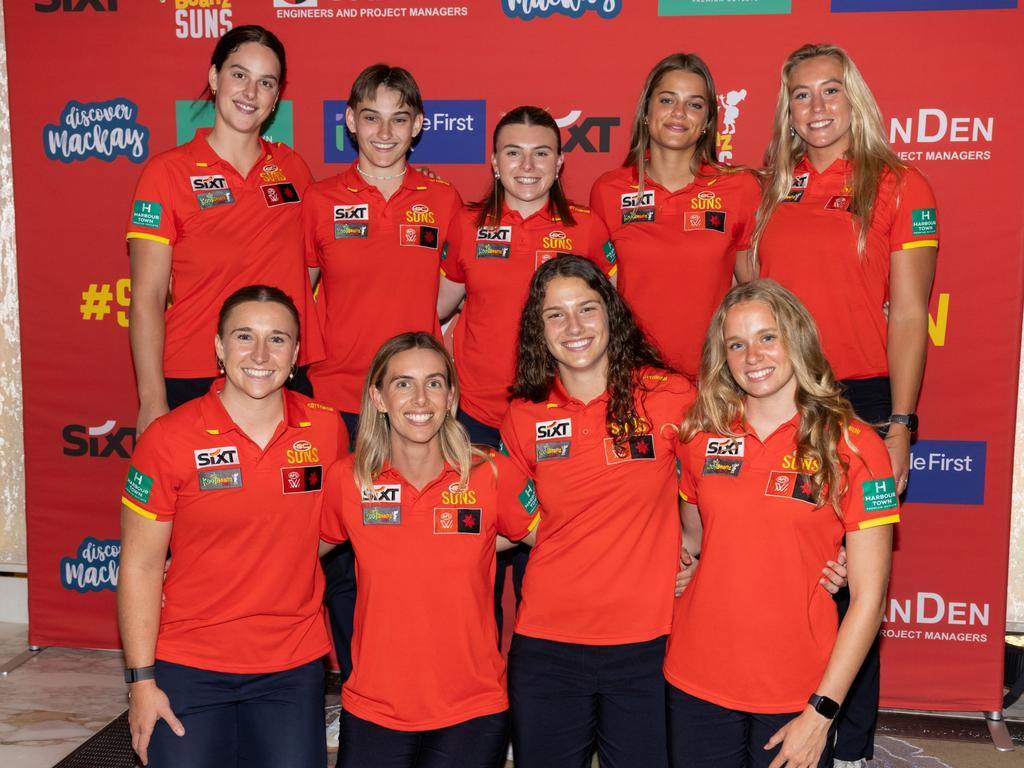
“I did have a conscious thought to myself when I arrived at the club, understanding I was going to be in rehab for a long period of time,” she said.
“Obviously I’m here to play football and I can’t show that right now, but I’m going to show them I work hard and the way I do that is by doing my rehab well.
“And my thing was I would always make sure I went to watch the girls train and get involved in any other capacity that I could. At least then, by the time I came back they could trust me.
“The team has done a really good job in listening to me and working with me to get back, because the process has been so specific.”
The darker days of rehabilitation were made easier by the warmer Gold Coast weather. Lynch had circled the Glitter Strip as a future home from a long way out and once she arrived, knew it was the place for her.
Living with teammate Wilson has helped accelerate their defensive partnership and the pair are ready to make good on faith the club showed in them at the trade table last year.
Finally pain-free, Lynch is eager to make up for lost time.
“I’m going to allow myself some space but at the same time there’s no doubt I’m striving to be back in my best form, I’d be silly not to strive for that.”
More Coverage
Originally published as Gold Coast AFLW: Katie Lynch reveals incredible story behind achilles rehabilitation






